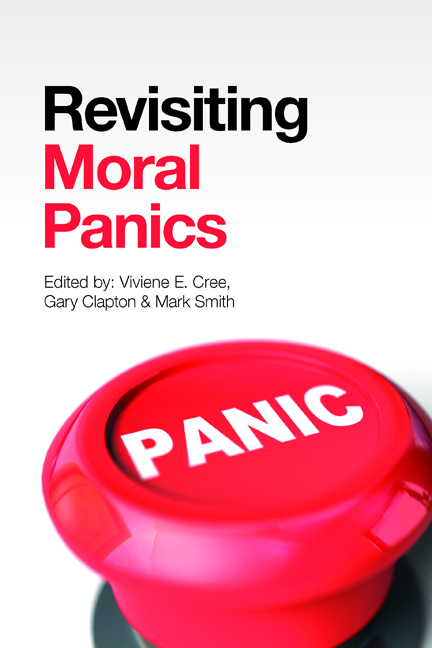Book contents
- Frontmatter
- Contents
- Contributors
- Preface
- Commentary moral panics yesterday, today and tomorrow
- Part One Gender and the family
- Part Two Moral panics in our time? Childhood and youth
- Part Three The state, government and citizens
- Part Four Moral crusades, moral regulation and morality
- Afterword the moral in moral panics
- Conclusion Moral panics and beyond
- Index
Commentary moral panics yesterday, today and tomorrow
Published online by Cambridge University Press: 08 March 2022
- Frontmatter
- Contents
- Contributors
- Preface
- Commentary moral panics yesterday, today and tomorrow
- Part One Gender and the family
- Part Two Moral panics in our time? Childhood and youth
- Part Three The state, government and citizens
- Part Four Moral crusades, moral regulation and morality
- Afterword the moral in moral panics
- Conclusion Moral panics and beyond
- Index
Summary
Introduction: mapping the field
This commentary offers a map of moral panic analysis. Like any map of a county or a country, it will contain some features that the user will find instantly recognisable and may even have visited. Other places will seem familiar, if only at second hand. Parts of the landscape will be wilder than others, with unusual names and forbidding prospects. But, with a bit of patience, it should prove an adequate guide for seasoned traveller and first-time visitor alike.
However, unlike for real maps, the moral panic cartographer is free to construct their own version of which places and routes to prioritise. Many anthologies of moral panic studies – and there are now a good number of them – have introductions that review moral panic analysis. Hier (2011a) divides analysts into three camps: the conventional, the sceptical and the revisionist. Krinsky (2013) perceives two waves of moral panic development, early and late. Rohloff et al (2013) outline fundamental conceptual issues and contemporary debates. Among the many careful evaluations, Garland's (2008) stands out. Each of these has its own utility.
My map starts with the two basic models of moral panic, explaining each before comparing the two. Next I attempt to summarise what accumulated studies have told us about five topic clusters and delivered to us as generalisations about moral panics as a whole. I then review briefly the many and varied criticisms of the concept. Finally, I consider the range of new directions that moral panic analysis may follow. I have made my own views clear but have not, I hope, skewed the arguments or evidence in their favour. A brief review cannot include everything that has ever been written about moral panics. The bibliography would then be longer than the text. So I have had to be selective. Apologies to those whose work is unjustly neglected in this account. To begin, then, at the beginning.
Cohen's processual model
Stanley Cohen published Folk Devils and Moral Panics in 1972. Based on his PhD, it analysed how British society reacted to seaside confrontations between members of two youth subcultures, Mods and Rockers, in the early 1960s. Cohen was less interested in the causes of deviance than in the process and consequences of labelling deviance.
- Type
- Chapter
- Information
- Revisiting Moral Panics , pp. xvii - xxxviPublisher: Bristol University PressPrint publication year: 2015
- 2
- Cited by

